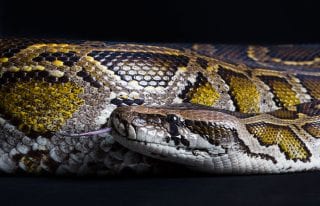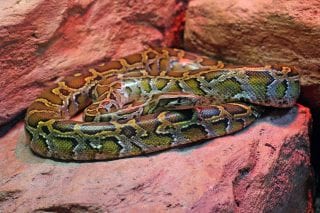Fun Facts
Big snacks
A Burmese python can eat prey that is 50-100 % of its body size.
Big jaw
Burmese pythons have stretchy ligaments in their jaws that allow them to swallow animals much bigger than their heads.
Arrival to Florida
A large number of Burmese pythons are now found in Florida, USA. The Burmese python likely first arrived in Florida as part of the exotic pet trade. Over time, they made their way into the Everglades in Florida due to deliberate releases from owners who could no longer take care of them or by accidentally escaping from their owners’ homes. It is estimated that 1,000 pythons escaped from a python breeder’s facility in Florida during Hurricane Andrew in 1992. This has led to significant population declines of native animals like raccoons, possums, rabbits, coyotes and birds. As a result, Burmese pythons are considered an invasive species in this area.
Smell
Burmese pythons detect scents with their tongues, which they flick out to do so. Their tongues are forked, allowing them to tell what direction scents are coming from.


